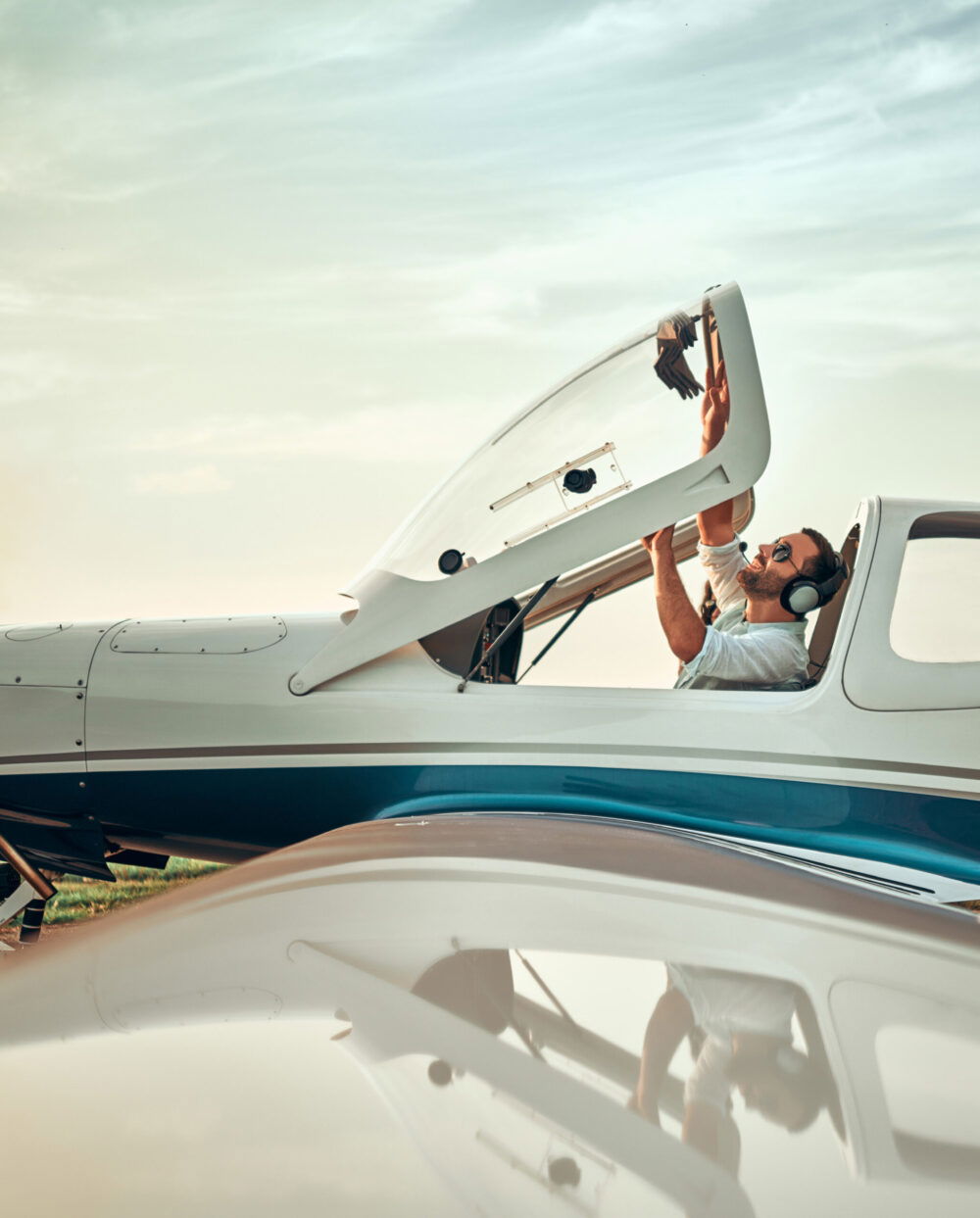Extending close to the length of a football field, U.K.-based Hybrid Air Vehicles’ (HAV) Airlander 10—dubbed “The Flying Bum” by the British public due to its double-ellipsoid airframe—is designed to be the world’s longest aircraft. Eventually, though, the 10-ton payload model could be the smallest in the Airlander family.
“We’ve always looked at larger Airlanders,” George Land, executive sales director for HAV, told FLYING, “and we’d always thought that probably a 50-ton aircraft was the next step up.”
If you're not already a subscriber, what are you waiting for? Subscribe today to get the issue as soon as it is released in either Print or Digital formats.
Subscribe NowThe Airlander 10’s 302-foot length equals that of the Soviet Union’s experimental Caspian Sea Monster—the longest fixed-wing aircraft in history. It would surpass Boeing’s 747-8, the longest in operation today. Another company, Google-backed startup LTA Research, is designing a proof-of-concept airship spanning more than 400 feet. But HAV is already working with the U.K.’s Civil Aviation Authority (CAA) to type-certify its design, which it hopes to introduce by 2029. Simultaneously, the firm is developing the even larger Airlander 50—and potentially, an Airlander 200 with a 200-ton payload. Those models could be fully electric and incorporate hydrogen powertrains.
“There’s no great leap in technology between the two aircraft, and you can scale up beyond 100 tons if you want to,” Land said. “But the question for us is, where’s the market for the next, larger aircraft?”
Not Your Average Airship
Other than its size, the design’s most striking feature is its unique flight profile.
The Airlander concept was borne out of a partnership with Northrop Grumman in the 1990s, acquired by the U.S. military in 2010, and sold back to HAV in 2013. An Airlander 10 prototype flew five times before being retired in 2019. Before then, though, the CAA approved HAV to design and build a production model.

HAV’s concept design for a 72-passenger Airlander 10 cabin. [Courtesy: Hybrid Air Vehicles]
While it may conjure comparisons to the infamous Hindenburg, The Flying Bum is less than half the size and runs on helium gas rather than flammable hydrogen. In fact, HAV does not consider it an airship, instead referring to it as a hybrid between lighter-than-air and fixed-wing aircraft. Helium contributes only about 60 percent of the lift—the shape of the balloon forms a giant wing, providing the rest.
Aerodynamic lift and vectored thrust come from two pairs of ducted propellers running on kerosene-powered engines, mounted outside the main hull. Land said the interior of the gargantuan structure is “virtually empty” save for ballonets—helium-filled sacks that control buoyancy and trimming.
“When you pump air into them, you are reducing the overall buoyancy of the aircraft,” Land said. “When you pump air out, you are increasing the overall buoyancy.”
The ballonets are placed in forward and aft positions such that added buoyancy in the front causes the aircraft to pitch up. The cockpit includes a dedicated trim panel, rather than a simple wheel or switches on the yoke. The combination of buoyant and aerodynamic lift creates some interesting capabilities. For example, Airlander 10 requires no runway for takeoff and landing—only a mooring mast and about 1,960 feet of flat space, whether that be tarmac, grass, sand, or even water. The design also boasts a 4,000 nm ferry range, dropping to 2,000 nm at full payload. But with a top speed of 70 knots indicated airspeed (IAS), its velocity is more comparable to a shipping vessel. For commercial operations, the recommended cruise is 50 knots IAS.
“It’s the optimum compromise, we think, between speed and fuel burn,” Land said. “Fuel burn if you fire all throttles goes up. But at 50 [knots], you’re in a situation where you can actually turn two of the engines off…and your fuel burn comes right down.”
HAV is working with the CAA to certify the Airlander 10 under the European Union Aviation Safety Agency’s (EASA) special condition for gas airships (SC GAS), finalized in 2022. The goal, however, is to transition to a hydrogen powertrain within two years of launching a baseline kerosene version. Future models could be all-electric from the jump. And as The Flying Bum grows in size, so too do its potential configurations.
“We know what the Airlander 10 is going to be,” Land said. “With the Airlander 50 or larger Airlanders, generally, it’s still pretty fluid.”
Go Big or Go Home
HAV envisions the Airlander 10 as a “multi-role” aircraft capable of handling passenger, cargo, and military missions.
Most reservations, Land said, are in the short-range passenger market. Luxury tourism operators—such as Spain’s Air Nostrum, which has committed to order 20 Airlander 10s—could use it as a “cruise ship in the sky.” With ample interior space, they can install spacious seats, double bedrooms, and living and dining areas for as many as 130 passengers. HAV markets the aircraft for decarbonizing regional and subregional aviation generally. Land said its low fuel burn and placement of fuel tanks in the envelope—rather than the wing or cabin—make it easier to electrify than a fixed-wing turboprop.
“In short-range regional transport, we can easily have the first aircraft into the market with a hydrogen powertrain, we think, because we’ve got fewer complications,” he said. The goal is to reduce emissions by 90 or even 100 percent compared to the regional aircraft it is replacing. Land said the design is “perfect” for passenger and cargo routes under 200 nm, where its slow speed is not as glaring.
Another possible application is long-endurance surveillance. In that role, Land said the “most economical speed” is 30 knots IAS. But the Airlander 10 can stay airborne for the “better part of a week”—up to five days—while carrying three tons of sensor payload and seven tons of other equipment. That garnered the model interest from the U.S. Department of Defense, which awarded HAV a three-year contract to develop it for maritime logistics.
Now, the DOD is examining the larger Airlander 50 as a way to minimize fuel deliveries to frontline troops. The objective is to field a viable demonstration aircraft by the time the partnership ends in 2026. HAV is working with BAE Systems to uncover further military uses. Land said the company is in a “brainstorming phase” with the Airlander 50, planned to hit the market in the early 2030s. But generally, it will be “geared toward cargo of various types.”
In March, HAV launched the Airlander Futures Network to gauge exactly what capabilities prospective customers need. Kuehne+Nagel, for example, signed on to explore it for logistics. An emergency management office in Oregon is eyeing it for disaster relief. Land sees a “big market” for large, underslung or comparable loads—such as wind turbine blades—and remote logistics. It could even replace mainstream shipping vessels.
“What we’re trying to do at the moment is reconcile all those needs into a single aircraft,” Land said. “You might even need a [vertical takeoff and landing] aircraft. Which means more power, flight control implications, and a lot more complexity in the aircraft.”
HAV’s goal is to churn out two dozen Airlanders per year at its factory in Doncaster, U.K., and it already has several customers. Just as important, however, will be convincing civilians that the massive aircraft won’t go down like the Hindenburg—especially since the Airlander 10 prototype suffered crashes on two out of five test flights.
On its final flight in 2017, for example, strong winds caused the prototype to come unmoored. Land said the aircraft has “no specific mechanisms” to mitigate against those conditions, and takeoffs and landings are limited above 30 knots windspeed. More test flights will be needed to prove it can overcome these concerns.
“In the end, it’s no good saying, ‘Well, the public should understand that it’s safe,’” Land said. “It’s our job to prove that it’s safe.”
This column first appeared in the June Ultimate Issue 959 of the FLYING print edition.





